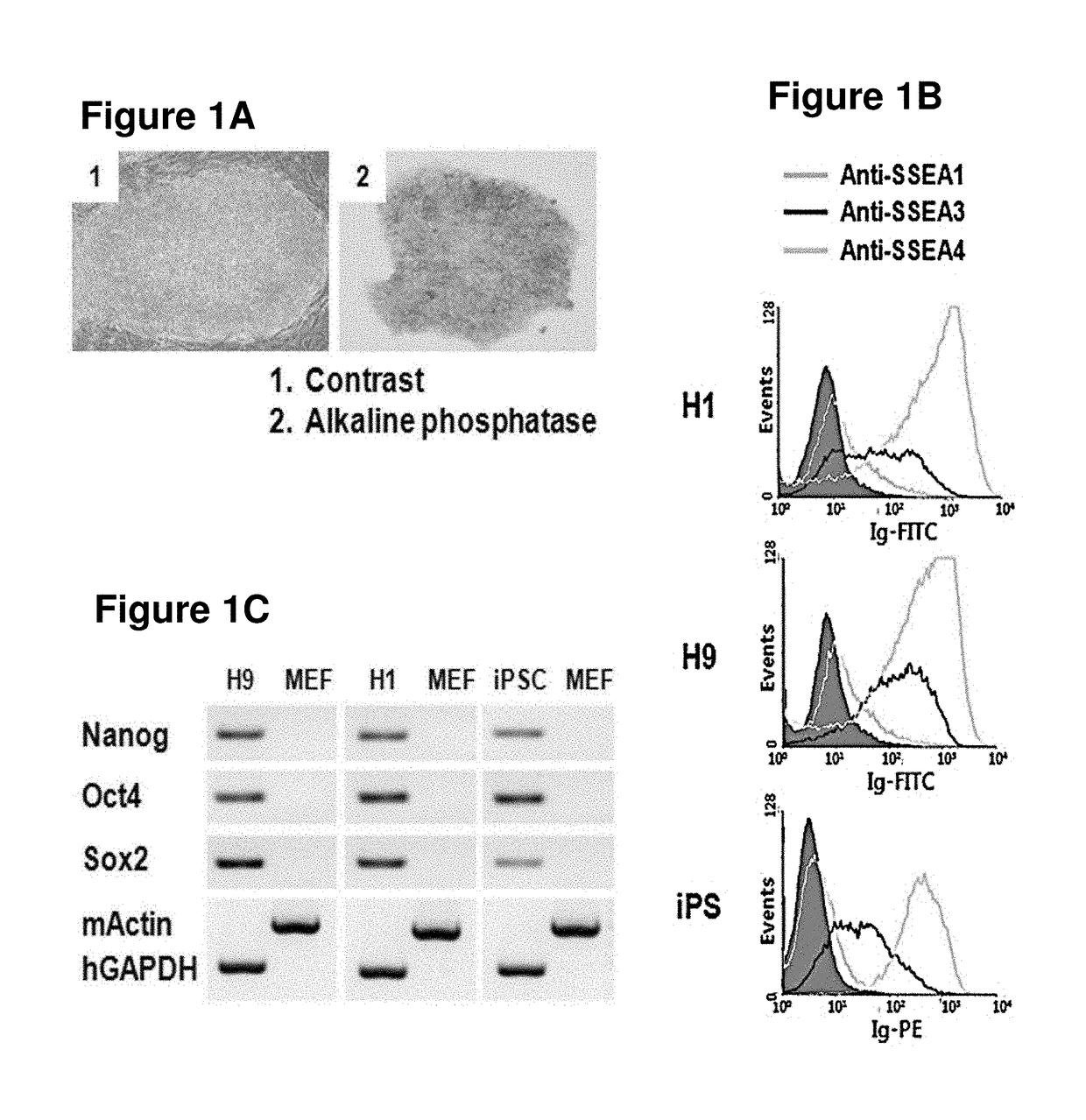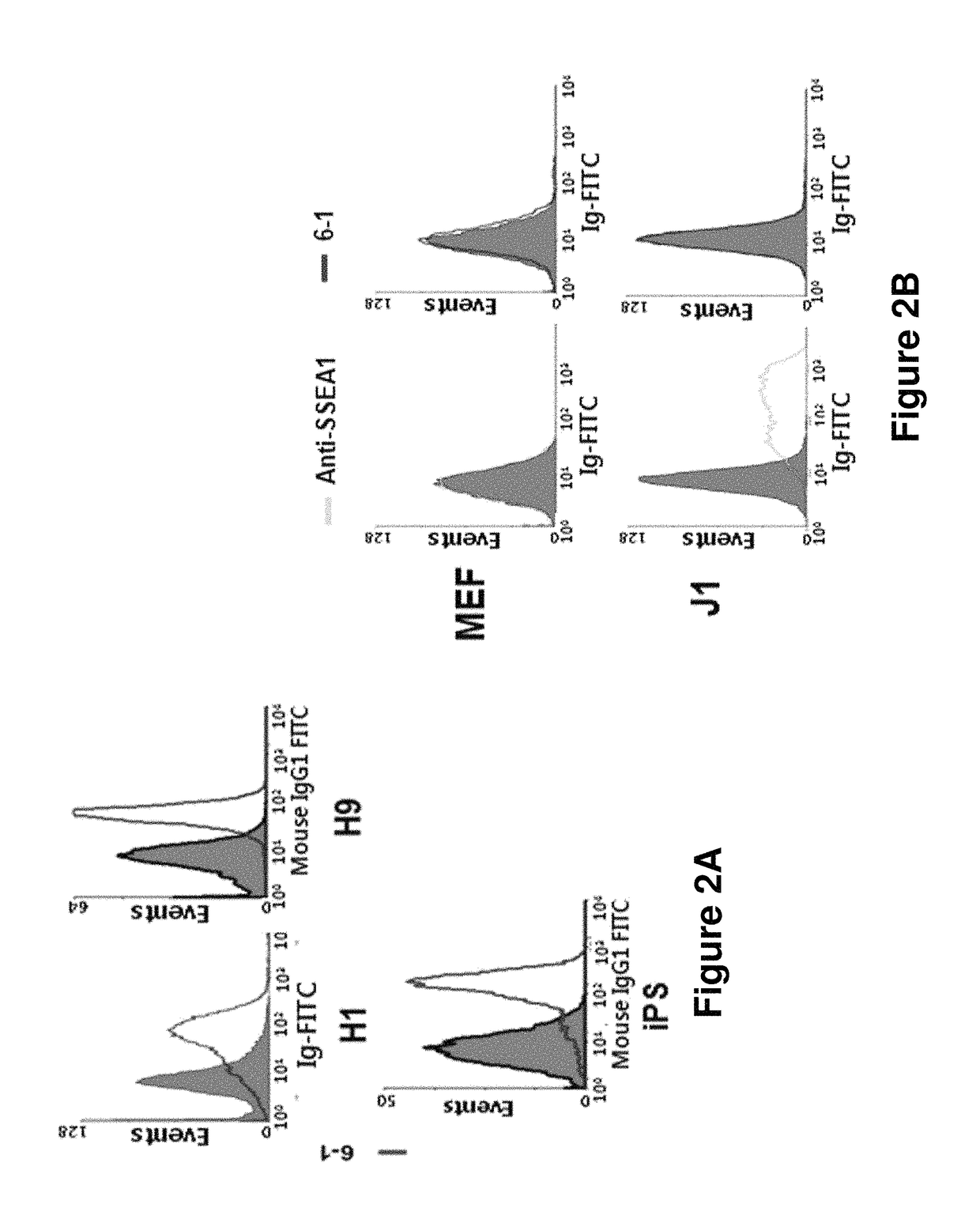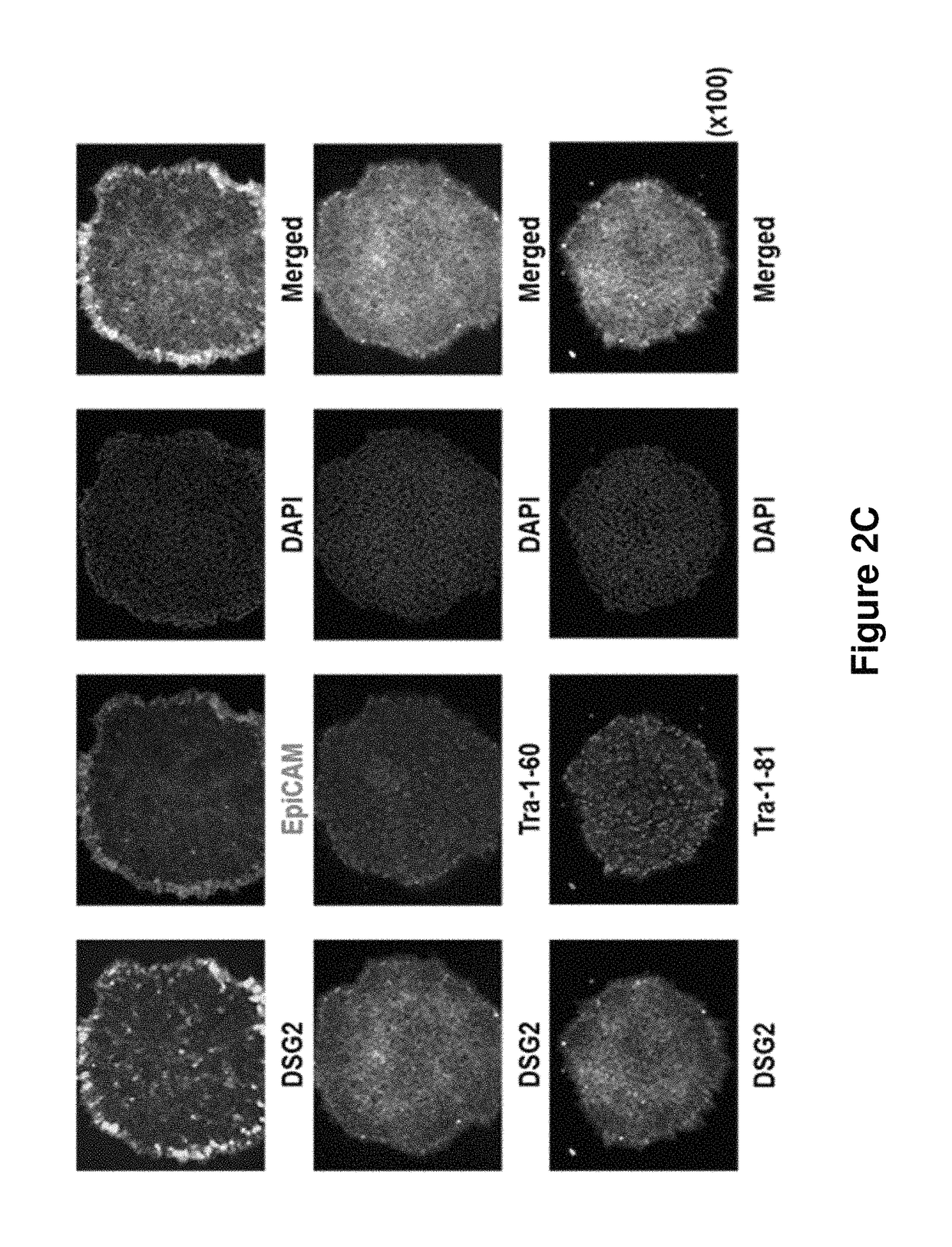Composition for detecting undifferentiated human pluripotent stem cell, monoclonal antibody 6-1 and use thereof
a technology of monoclonal antibodies, which is applied in the field of composition for detecting undifferentiated human pluripotent stem cells, monoclonal antibodies 61, can solve the problems of both methods being limited in separating undifferentiated pluripotent cells alone with 100% purity
- Summary
- Abstract
- Description
- Claims
- Application Information
AI Technical Summary
Problems solved by technology
Method used
Image
Examples
example 1
ripotent Stem Cell Culture and Confirmation of the Undifferentiation Status Thereof
Culture of Human Pluripotent Stem Cells
[0132]To construct a novel monoclonal antibody that can recognize human embryonic stem cells specifically, the human embryonic stem cell lines H1 and H9, and the induced pluripotent stem cell (iPSC) line were distributed from National Institute of Health (NIH, USA) and ATCC. The cells were cultured in DMEM (Dulbecco's modified Eagle's medium) / F12 (Gibco, Rockville, Md., USA) supplemented with 20% Knockout SR (Gibco), 0.1 mM β-mercaptoethanol (Sigma, St Luis, Mo., USA), 2 mM glutamine (Gibco), 0.1 mM non-essential amino acid (Gibco), 100 U / ml penicillin G (Sigma), 100 μg / ml streptomycin (Sigma), and 5 ng / ml bFGF (Gibco Invitrogen), followed by sub-culture every 5˜7 days.
[0133]Particularly, a tissue culture plate (Nunc) was coated with 0.1% gelatin solution at 37° C. for 30 minutes. MEF (mouse embryonic fibroblast, Korea Research Institute of Bioscience and Biotec...
example 2
ion of Mouse Hybridoma
[0139]The human pluripotent stem cells (H9) cultured by the method described in Example was separated by treating with collagenase IV. Approximately 2×106 cells were suspended in 100 μl of PBS, which were then irradiated with γ-ray to inactivate the stem cells. The cells were then intraperitoneally injected in Balb / c mouse. The injection was repeated three times every three weeks and lastly performed 3 days before cell fusion.
[0140]To collect feeder cells, 20 ml of DMEM (GIBCO) was filled in the peritoneum of a health mouse one day before cell fusion. DMEM was then absorbed out from the mouse, by which peritoneal cells were collected. The collected cells proceeded to centrifugation. Also, normal spleen was pulverized, from which cells were extracted. These two types of cells were mixed, to which 20% FBS was added. The mixed cells were distributed in a 96-well plate at the density of 105 cells / well, followed by culture in a 37° C. CO2 incubator. NS1 myeloma cel...
example 3
n of the Monoclonal Antibody Binding to Human Pluripotent Stem Cells
Selection of the Hybridoma Clone Producing the Monoclonal Antibody which Binds to Human Pluripotent Stem Cells
[0143]Among those clones prepared in Example 2, the hybridoma clone which secreted the antibody comparatively stably was selected and the binding capacity to human pluripotent stem cells was investigated. Particularly, the cultured human pluripotent stem cells were separated by using collagenase IV. The cells were treated with cell separation buffer (GIBCO) for 20 minutes at 37° C., leading to the separation of the cells as single cells. The cells were passed through 40 μm strainer, and 2×105 cells proceeded to flow cytometry. The human pluripotent stem cells prepared as single cells were suspended in PBA (1% BSA was dissolved in PBS), followed by reaction with the antibody supernatant at 4° C. for 30 minutes. Centrifugation was performed at 4° C. at 1200 rpm for 5 minutes and 100 μl of the supernatant was ...
PUM
| Property | Measurement | Unit |
|---|---|---|
| pH | aaaaa | aaaaa |
| pH | aaaaa | aaaaa |
| pH | aaaaa | aaaaa |
Abstract
Description
Claims
Application Information
 Login to View More
Login to View More - R&D
- Intellectual Property
- Life Sciences
- Materials
- Tech Scout
- Unparalleled Data Quality
- Higher Quality Content
- 60% Fewer Hallucinations
Browse by: Latest US Patents, China's latest patents, Technical Efficacy Thesaurus, Application Domain, Technology Topic, Popular Technical Reports.
© 2025 PatSnap. All rights reserved.Legal|Privacy policy|Modern Slavery Act Transparency Statement|Sitemap|About US| Contact US: help@patsnap.com



